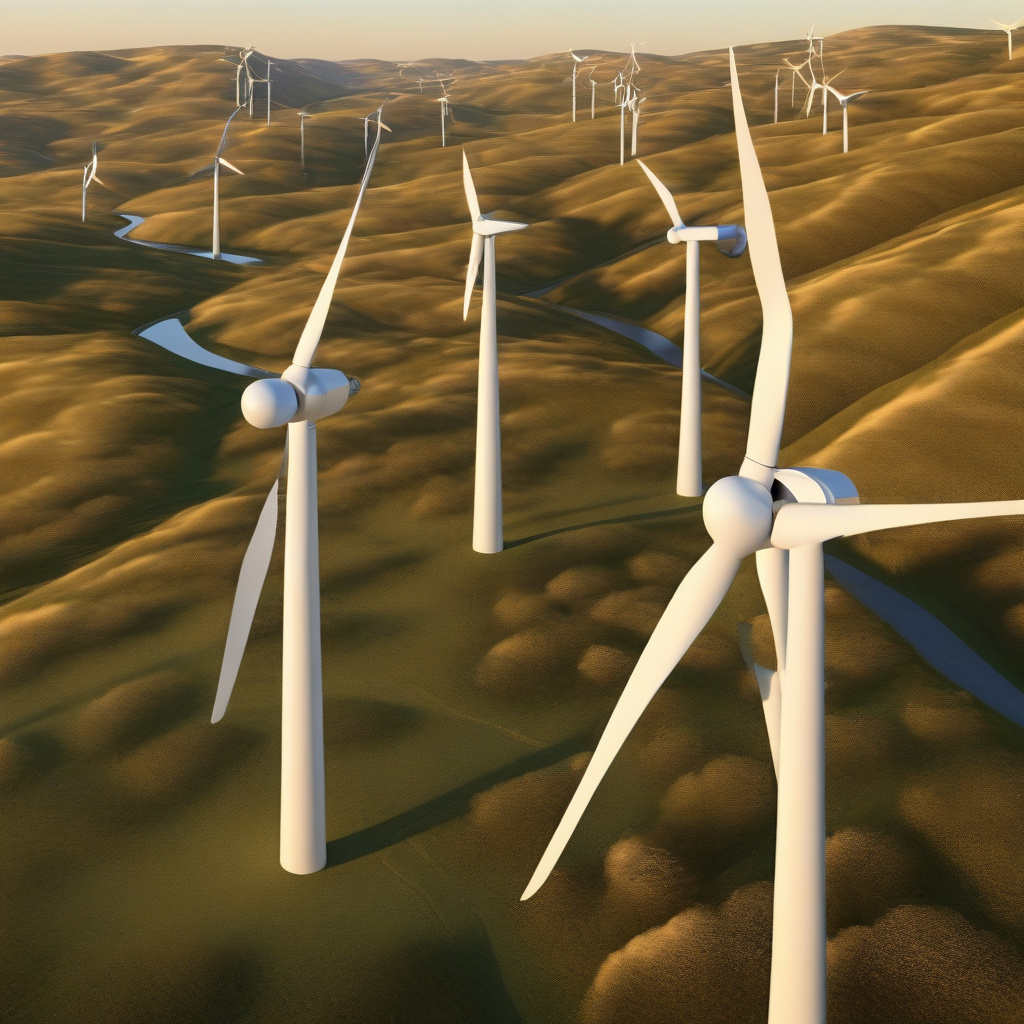Tiny Wind Turbines Uncover Hidden Power in the Breeze
Researchers have discovered that two tiny, counter-rotating wind turbines working in tandem can generate 37% more power by capturing a previously unnoticed aspect of the wind – its twist. This breakthrough in wind energy technology opens up new possibilities for increasing renewable energy production in a more efficient and sustainable manner.
Traditionally, wind turbines operate on the principle of harnessing the kinetic energy of the wind to generate electricity. However, a team of researchers at Stanford University has found that by incorporating a unique “twist” in the design of their wind turbines, they were able to significantly boost power generation. This twist involves using two smaller turbines instead of one larger one, with each turbine rotating in the opposite direction to the other.
The key advantage of this dual-turbine system is its ability to capture the inherent twist present in the wind. As the wind flows through the turbines, it naturally spirals or twists due to various factors such as friction with the ground and obstacles in its path. By aligning the turbines in a counter-rotating configuration, the researchers were able to effectively harness this twist, resulting in a substantial increase in power output.
In a series of experiments conducted at the university’s wind tunnel facility, the team observed that the dual-turbine system outperformed traditional single-turbine setups by a margin of 37%. This significant improvement in power generation has the potential to revolutionize the field of wind energy and address some of the key challenges facing the industry.
One of the primary advantages of this innovative approach is its scalability. Unlike large, conventional wind turbines that require vast open spaces and are often met with resistance from local communities, these tiny turbines can be deployed in a variety of settings, including urban areas and residential neighborhoods. This flexibility opens up new possibilities for decentralized energy production, where power can be generated closer to where it is consumed.
Moreover, the dual-turbine system offers increased efficiency and reliability compared to single-turbine designs. By splitting the workload between two smaller turbines, the system can better adapt to fluctuations in wind speed and direction, ensuring a more consistent power output. This enhanced stability is crucial for integrating renewable energy sources into the existing grid and reducing reliance on fossil fuels.
The impact of this research extends beyond just the realm of wind energy. The insights gained from studying the twist in the wind could have broader implications for fluid dynamics and aerodynamics, with potential applications in fields such as aircraft design, climate modeling, and renewable energy technologies.
As the global demand for clean energy continues to rise, innovations like the dual-turbine wind system represent a significant step towards a more sustainable future. By tapping into the hidden power of the wind, researchers are not only increasing energy production but also pushing the boundaries of what is possible in the field of renewable energy.
In conclusion, the discovery of the twist in the wind and its integration into a dual-turbine wind system highlights the importance of thinking outside the box when it comes to renewable energy solutions. With further research and development, this technology has the potential to reshape the way we harness wind power and pave the way for a greener, more sustainable world.
wind energy, renewable power, dual-turbine system, sustainable technology, energy innovation












